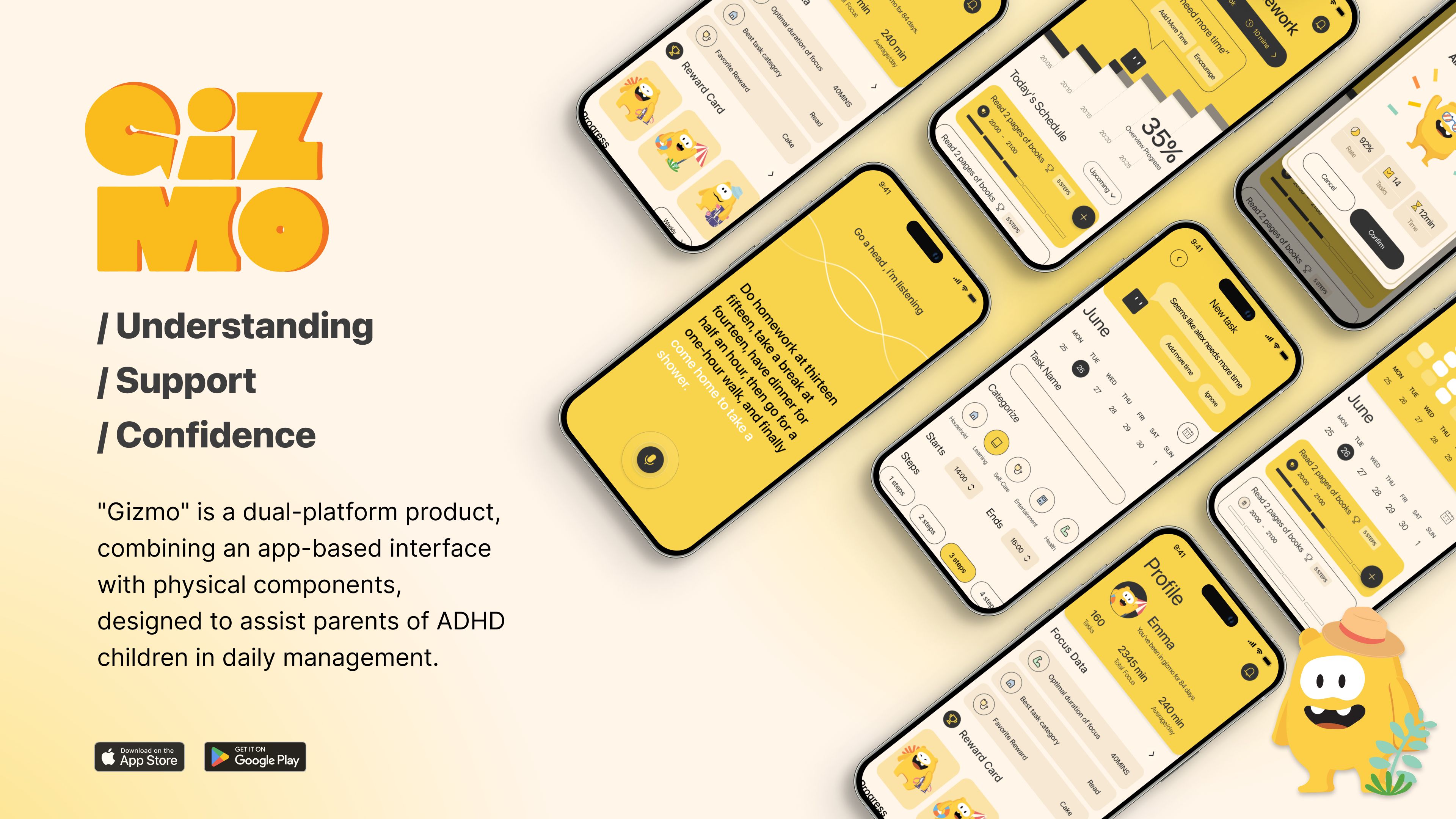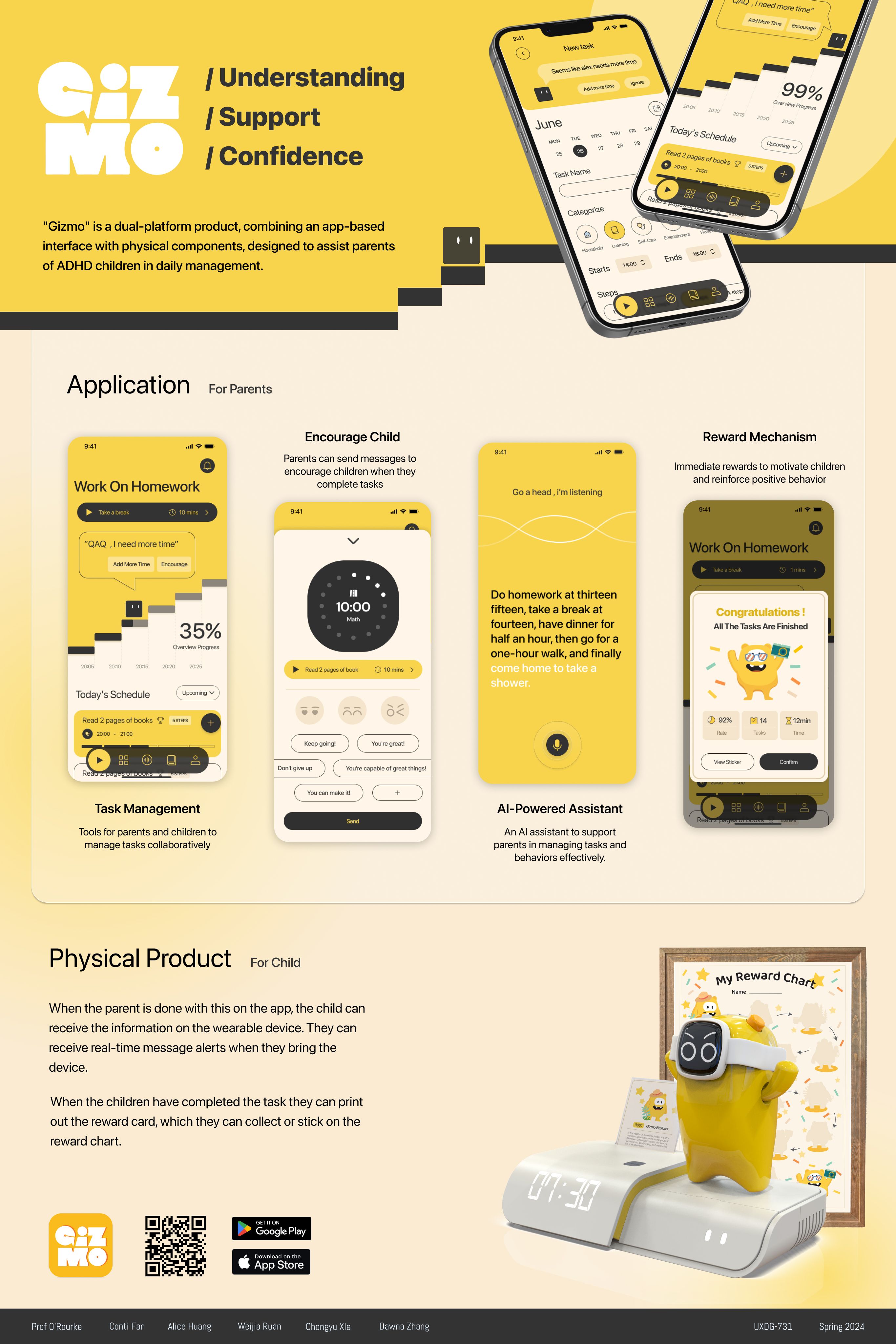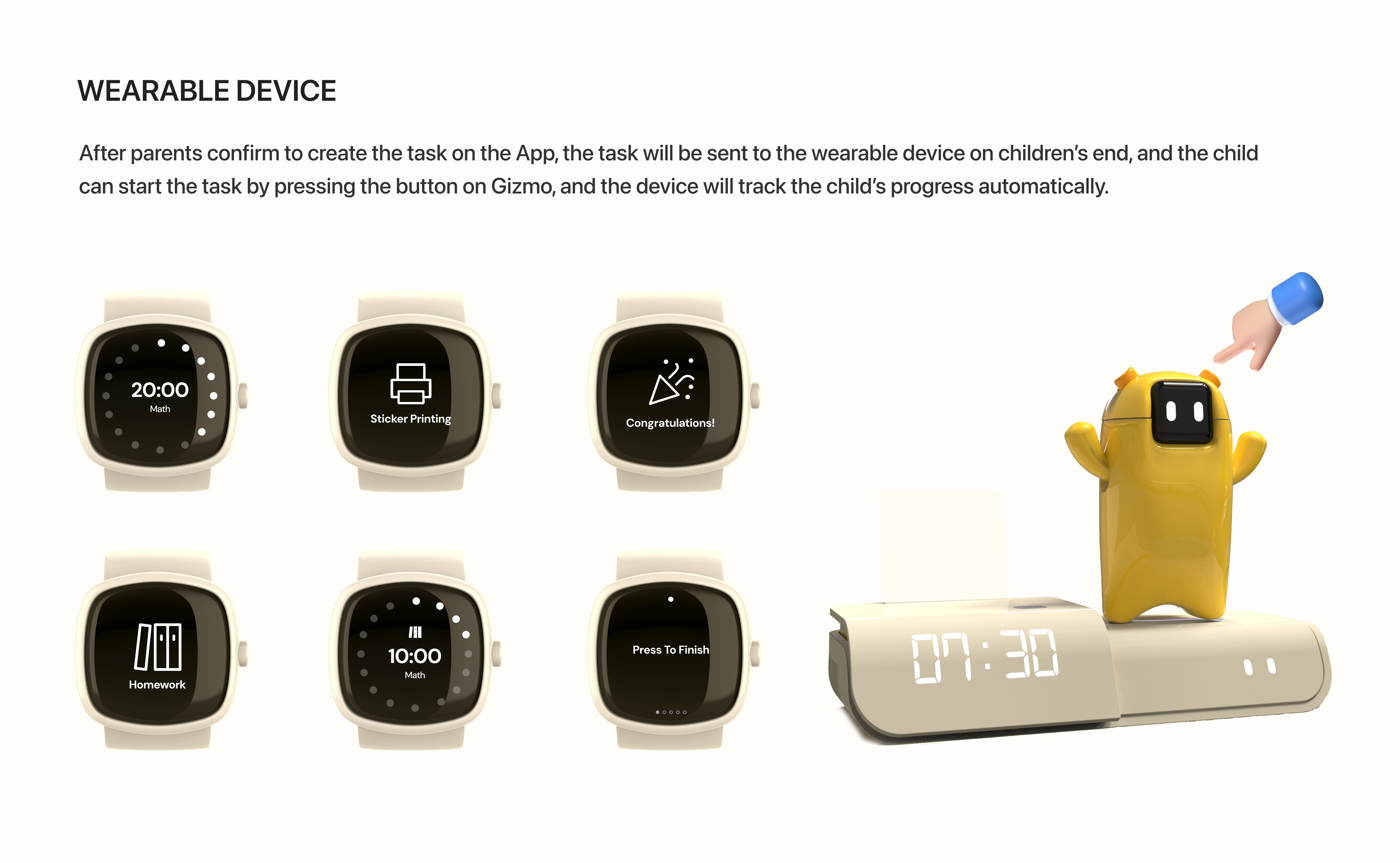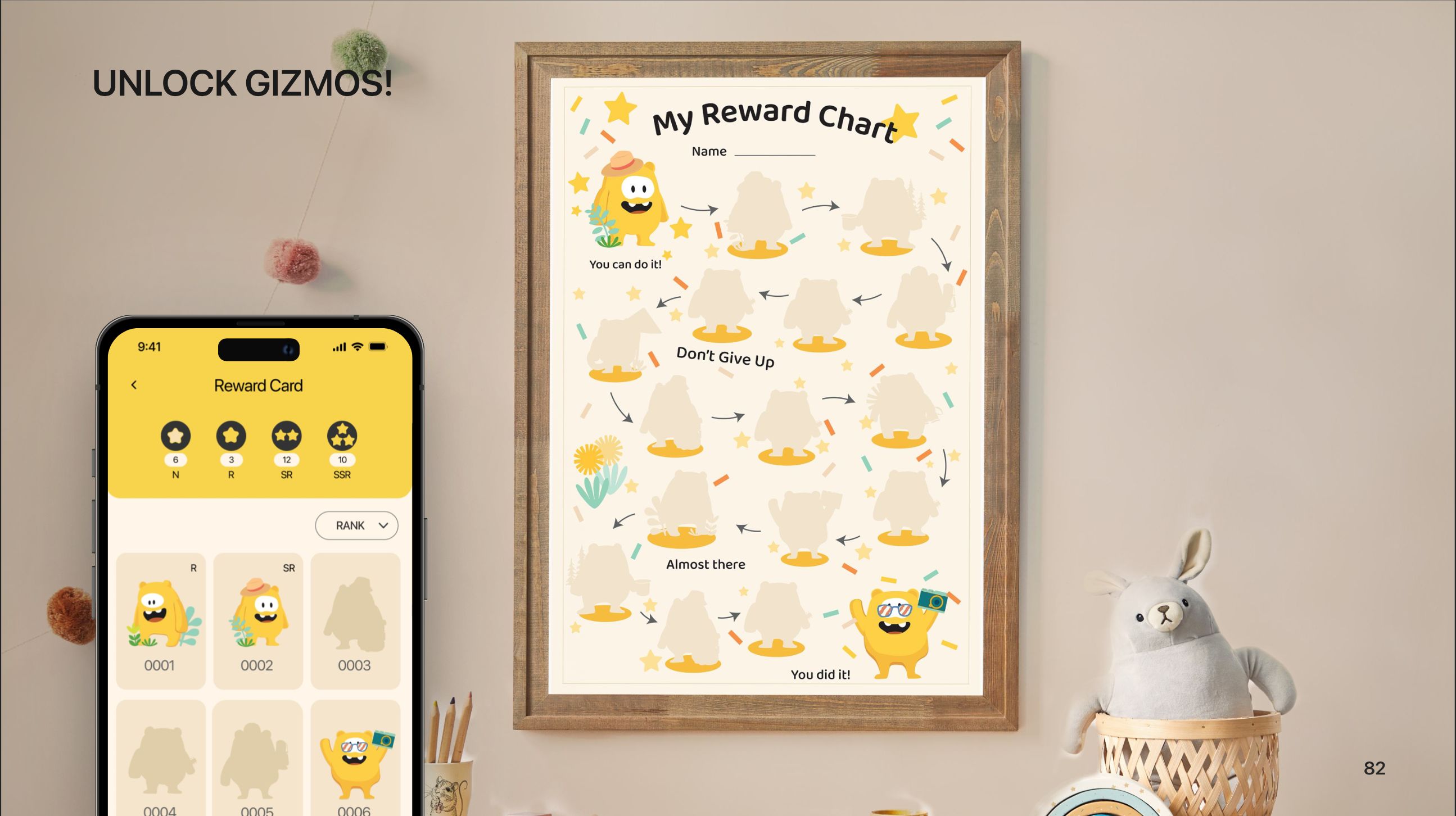
Designers
Chenyu Zhang (Dawna), Chia-Wei Fan (Conti), Ziyao Huang (Alice), Weijia Ruan, Chongyu Xie
Year
2025
Category
New Talent
Country
United States
School
Savannah College of Art and Design
Teacher
Anthony O'Rourke

Three questions to the project team
What was the particular challenge of the project from a UX point of view?
At the heart of the Gizmo project was a challenge that struck a chord: how to keep parents consistently engaged in using the tool to support their children. Limited resources and tight timelines meant we couldn’t pursue an “ideal” solution requiring extensive development. Instead, we leaned into what mattered—understanding our users’ needs deeply. By working closely with stakeholders and listening to continuous user feedback, we refined the design iteratively, balancing practicality with purpose. This approach allowed us to focus on creating meaningful connections and ensuring the tool truly supported families over the long term, even within our constraints.
What was your personal highlight in the development process? Was there an aha!-moment, was there a low point?
One of the key aha! moments occurred during the iterative design and testing phases, when we shifted our focus from visual updates to addressing deeper UX challenges. Continuous user testing revealed that sustaining long-term engagement was the core issue. To address this, we integrated AI and machine learning features, along with a rewards system, that provided personalized recommendations and gathered data over time. This approach helped parents feel more confident and informed. The compelling usability test results and early design concepts helped stakeholders understand the importance of this shift, securing their support for solutions that encouraged lasting engagement and stronger ADHD treatment relationships.
Where do you see yourself and the project in the next five years?
In our design process, we found that many issues faced by families with ADHD children are closely related to current societal challenges. Despite advancements in medical technology, busy parents often lack the time and energy to care for ADHD children and acquire new knowledge. Therefore, we aim to introduce AI and address these challenges through scientifically effective methods such as reward systems and time management. Over the next five years, our product will continue to evolve alongside AI and technological advancements, providing efficient and low-cost solutions to complement existing medical approaches in supporting ADHD families.


